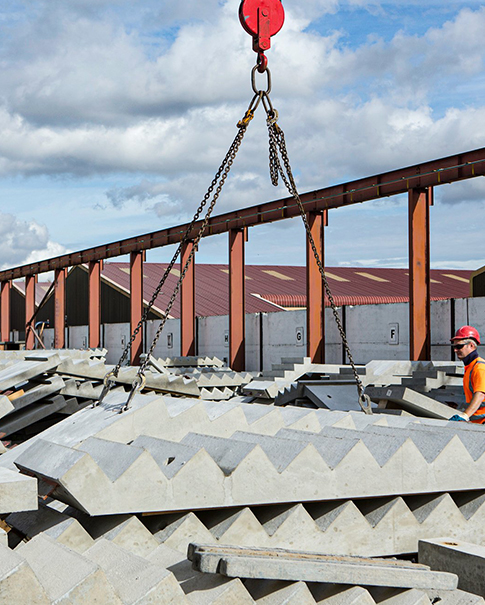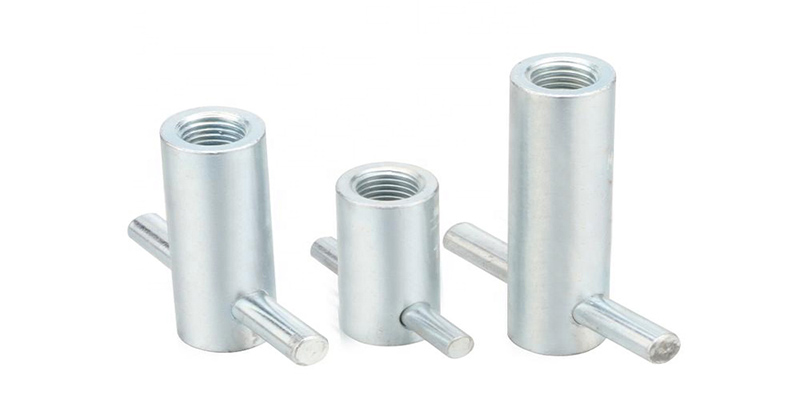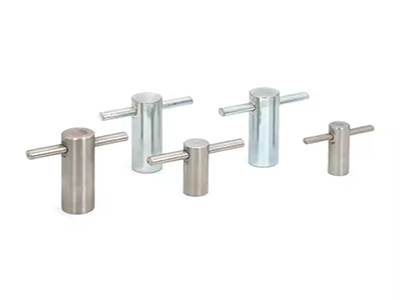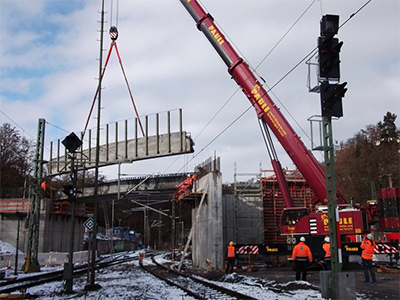-

Schicken Sie uns eine E-Mail
sale@lscmagnetics.com -

Kontaktnummer
+86 -13559234186

Schicken Sie uns eine E-Mail
sale@lscmagnetics.com
Kontaktnummer
+86 -13559234186
Was ist eine Hebebuchse? Die „unsichtbare Hebehand“ in der modernen Architektur
May 12, 2025In Fertighäusern, Brückenprojekten und sogar Kernkraftwerken ist das Heben schwerer Bauteile seit jeher eine zentrale Herausforderung für die Sicherheit und Effizienz der Bauarbeiten. Das herkömmliche Schweißen von Hebeösen oder das Bündeln von Drahtseilen ist nicht nur zeitaufwändig, sondern kann aufgrund ungleichmäßiger Kräfte auch zu Betonrissen führen. Ein Gerät namens Hebebuchse (Hubhülse/Hubhülse) entwickelt sich still und leise zur „unsichtbaren Hebehilfe“ des modernen Industriebaus. Wie gelingt präzises Heben? Und warum wird es als „Seelenaccessoire“ modularer Gebäude bezeichnet?

1. Hebebuchse: Mehr als nur ein „Eisenring“
Die Hebevorrichtung ist eine standardisierte Hebeschnittstelle, die in Beton- oder Stahlkonstruktionen eingebettet ist. Sie sieht aus wie eine einfache Metallhülse, verbirgt aber ein ausgeklügeltes Design. Durch die schnelle Verbindung mit der Kranschlinge kann sie mehrere Tonnen oder sogar Hunderte Tonnen Last gleichmäßig auf den Hauptkörper des Bauteils übertragen. Sie kann als „Schweizer Taschenmesser“ im Bereich Schwerlastheben bezeichnet werden.
Kernstruktur enthüllt
Hülsenkörper „Stahl und Eisen“
- Material: hochfester legierter Stahl oder Edelstahl, verzinkt oder mit einer Korrosionsschutzschicht auf der Oberfläche besprüht, geeignet für raue Umgebungen wie Feuchtigkeit und Salznebel.
- Innenaufbau: Gewindebohrung, konischer Schlitz oder genormte Aufnahme, passend für Ringschrauben, Schäkel oder spezielle Anschlagmittel.
- Äußeres Design: Umgeben Sie die Ankerstange oder Nut, um einen festen „Biss“ mit dem Beton zu gewährleisten und so eine Kraftablösung zu vermeiden.
Vorinstalliertes System: unsichtbares Fundament
- Vor dem Gießen durch Binden oder Schweißen in der Schalung befestigt, tief mit dem Bauteilstahlgewebe integriert, um eine „mechanische Gemeinschaft“ zu bilden.
- Einige Modelle unterstützen ein abnehmbares Design, wodurch die Hülse wiederverwendet werden kann und die Baukosten gesenkt werden.
2. Warum brauchen wir eine Hebebuchse?
Drei große Schwachstellen beim traditionellen Gewichtheben
- Hohes Risiko: Das Stahldrahtseil wird leicht in die Betonkante eingeklemmt, wodurch leicht Risse entstehen können.
- Geringe Effizienz: Jedes Bauteil muss separat mit einer Hebeöse verschweißt werden, was zeit- und arbeitsintensiv ist.
- Irreversibel: Der freiliegende Hebepunkt zerstört die Optik des Bauteils und die spätere Verarbeitung ist umständlich.
Der bahnbrechende Vorteil von Lifting Socket
Doppelte Sicherheit – Die Last wird gleichmäßig über das eingebettete System verteilt, um Spannungskonzentrationen zu vermeiden, und die Unfallrate beim Heben wird um mehr als 70 % reduziert (gemäß Standardtest ISO 14545).
Effizienzrevolution – Das Hebegerät ist „Plug-and-Play“ und die einzelne Verbindungszeit wird von 20 Minuten auf 30 Sekunden verkürzt, was es besonders für das Heben von vorgefertigten Chargen geeignet macht.
Unsichtbare Ästhetik – Nach der Fertigstellung kann die Hülse mit einer Abdeckplatte verschlossen werden, um ein „spurloses Anheben“ zu erreichen und den ästhetischen Anforderungen hochwertiger Gebäude gerecht zu werden.
3. Von der Fabrik zur Baustelle: Lifting Socket vollständige Prozessanalyse
Entwurfsphase: Aktuarmechanik und Positionierung – Je nach Gewicht und Schwerpunkt der Komponente werden die Anzahl der Hülsen und die eingebetteten Koordinaten durch das BIM-Modell bestimmt, und der Fehler muss innerhalb von ±2 mm liegen.
Installationsmethode in vier Schritten
- Schritt 1: Vor dem Gießen die Hülse auf dem Stahlskelett fixieren und nach dem Einspritzen des Betons rütteln und verdichten.
- Schritt 2: Nach Abschluss der Wartung die verzinkte Ringschraube einschrauben (Gewindefett muss aufgetragen werden).
- Schritt 3: Befestigen Sie den Kranhaken und führen Sie einen statischen Belastungstest mit 125 % der Nennlast durch.
- Schritt 4: Nachdem das Anheben abgeschlossen ist, entfernen Sie die Bolzen und decken Sie sie mit Schutzabdeckungen ab, um das Eindringen von Fremdkörpern zu verhindern.
Wichtige Punkte für Betrieb und Wartung
- Rostschutzmanagement: Bei Küstenprojekten muss das Gewinde monatlich auf Rost überprüft und zur Wartung ein spezielles Fett verwendet werden.
- Lebensdauerwarnung: Nachdem eine einzelne Hülse mehr als 200 Mal verwendet wurde, ist eine Magnetpulverprüfung erforderlich, um innere Risse zu erkennen.


Von den vorgefertigten Bogenrippen des Sydney Opera House bis zum Absenktunnel der Hongkong-Zhuhai-Macao-Brücke – die Lifting Socket mit ihrer scheinbar unauffälligen Optik verleiht der modernen Architektur einen effizienteren und sichereren Weg. Sie ist nicht nur ein Technologieträger, sondern auch eine konkrete Verkörperung industriellen Denkens im Bauwesen. Mit der zunehmenden Verbreitung intelligenter Konstruktionen könnte diese „unsichtbare Schraube“ in Zukunft die Spielregeln für schwere Hebearbeiten neu definieren.